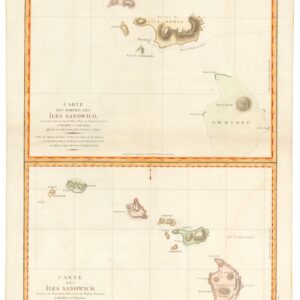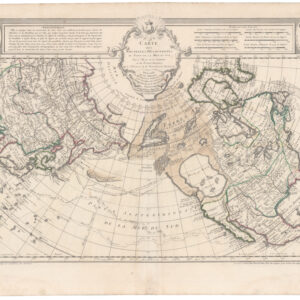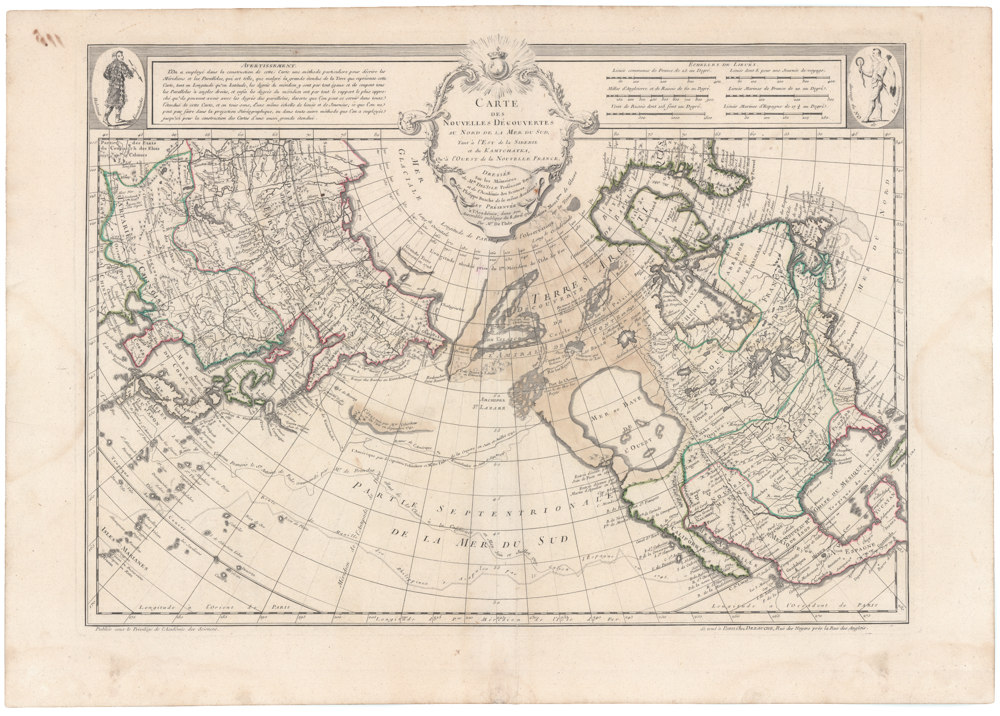The second printed map of northwest North America, including the Northwest Passage.
Limes Occidentis Quivira et Anian.
Out of stock
Description
This is a fine example of Wytfliet’s map of the northwest coast of North America, the second printed map to focus on the region known today as Alaska and the Pacific Northwest.
The map follows the Pacific coast from Northern California to a mythical Northwest Passage in the Arctic Circle, based upon Mercator’s large world map of 1569. It shows an area similar to De Jode’s Quivirae Regnu of 1593, the first printed map to focus on this region. The nomenclature is from the Plancius world map of 1592.
The place names are derive from a mix of history and myth. Quivira Regnum refers to the Seven Cities of Gold sought by the Spanish explorer Francisco Vasquez de Coronado in 1541. In 1539, Coronado wandered over present-day Arizona and New Mexico, eventually heading to what is now Kansas to find the legendary wealthy city of Quivira. Although he never found the cities or the gold, the name stuck on maps of southwest North America, wandering from east to west.
Cape Mendocino, also labeled on the map, is a point named by another Spanish explorer, Andres de Urdaneta, in 1565. This geographical landmark was important to the Acapulco-Manila galleon trade, as the westerly winds pushed the galleons toward this part of the coast, from where they would then turn south toward Acapulco.
The majority of the place names and geography north of Cape Mendocino, however, are pure conjecture, as no European would reach this area of the coastline for another 180 years. A number of ambiguous place names, like the R. de los Estrechos (‘River of the Straits’) and the inlet marked Grades Corrientes (‘Great Currents’), embellish this largely mythical map.
Perhaps the most recognizable place name on the map is Anian. Anian derives from Ania, a Chinese province on a large gulf mentioned in Marco Polo’s travels (ch. 5, book 3). The gulf that Polo described was actually the Gulf of Tonkin, but the province’s description was transposed from Vietnam to the northwest coast of North America. The first map to feature Anian was Giacomo Gastaldi’s world map in 1562, followed by Zaltieri and Mercator in 1567. The Strait of Anian then became shorthand for a passage to China, i.e. a Northwest Passage. It appeared on maps until the mid-eighteenth century.
Cartographer(s):
Cornelis van Wytfliet (died around 1597) was a geographer from Leuven in the Habsburg Netherlands, best known for producing the Descriptionis Ptolemaicae augmentum sive Occidentis notitia brevis commentario, as a supplement to Ptolemy’s Geographia.
‘Descriptionis‘ was published in Leuven in 1597 and is considered the first atlas devoted exclusively to the New World. It featured nineteen maps: one world map and eighteen regional maps. The regional maps, in particular, are notable as early representations of specific areas of North and South America.
Condition Description
Fine condition with a strong impression.
References
Rumsey 11622.051 (also 1607 state 2). Burden, P., The Mapping of North America, 107. Brown University, JCB Library, F597 W996d /1-SIZE.




